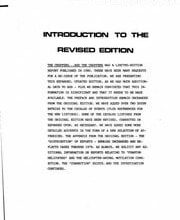Understanding the Significance of ‘2027’: What U.S. Classification Laws Reveal About Future Disclosure

The Countdown to 2027: What U.S. Classification Laws Could Reveal About UFOs
In the world of UFO enthusiasts, the year "2027" is generating a buzz, with many speculating that it could be a crucial moment for disclosure regarding unidentified aerial phenomena (UAP). But what exactly makes this particular year noteworthy? One potential explanation lies in the intricacies of U.S. classification laws.
Understanding U.S. Classification Laws
Before diving deeper, it’s important to clarify that I am not a lawyer or a classification expert. My insights come from personal research, and I welcome corrections or input from those more knowledgeable in the field.
The U.S. National Archives has a dedicated page from its Information Security Oversight Office (ISOO), outlining automatic declassification timelines and specific exemptions. A key document here is the "ISOO Notice 2024-02," which lists the agencies allowed to request exemptions from automatic declassification at different intervals: 25, 50, and 75 years.
What’s at Stake?
Several major U.S. agencies fall under these regulations, including:
- Central Intelligence Agency (CIA)
- National Security Agency (NSA)
- Federal Bureau of Investigation (FBI)
- Department of Defense (DOD)
- National Aeronautics and Space Administration (NASA)
The current executive order guiding the declassification process is Executive Order 13526, signed by President Obama in 2009. One of its critical components states that “no information may remain classified indefinitely,” indicating a clear timeline for when classified information should be made available to the public.
According to the order, information typically should be automatically declassified after 10 years, while more sensitive material can be held for up to 25 years. However, classified information can remain secret for 50 or 75 years under specific exemptions outlined in the order.
Why 2027 Matters
So, how does this all relate to 2027? As we approach this significant date, certain timelines will come into play:
- 25-Year Exemption: Any documents classified after 2002 will fall into this category.
- 50-Year Exemption: Documents classified back to 1977 will be subject to this timeline.
- 75-Year Exemption: Documents dating back to 1952 will have the potential to be declassified by 2027.
In essence, on December 31, 2027, we might see a wave of declassified documents related to events that happened 75 years prior, particularly any incidents from 1952 that might involve UAP.
A Look Back at 1952
One notable event from 1952 is the Washington UFO Flap, which captured public attention through numerous reported sightings and radar anomalies over the nation’s capital. This surge of UFO sightings was so significant that 148 of the nation’s top newspapers reported on it extensively, driving the conversation about the existence of UAP.
There were multiple eyewitness accounts from credible sources, including air traffic controllers who tracked unidentified objects on radar, suggesting something out of the ordinary was occurring that summer.
Notably, a recent study uncovered strange optical phenomena occurring on July 19, 1952—coincidentally, the same night as some of the most significant sightings. Was this merely a coincidence, or do these records hold greater importance in understanding what was happening in U.S. airspace during that period?
The Path Forward
If the speculation surrounding 2027 holds any truth, it may be due to insiders or researchers who have obtained classified information about the 1952 Washington UFO incidents, aware that some of this information will soon be publicly accessible.
While we can’t definitively say what will be revealed when those records are unsealed, the prospect of shrouded governmental insights into UAP is tantalizing. As the clock ticks toward 2027, the question remains: What secrets could finally come to light?
Stay tuned as we continue to follow developments leading up to this potentially historic year in UAP research and disclosure.




